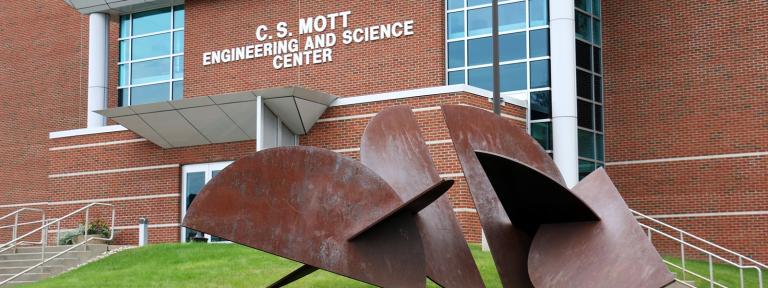
Dr. Mehrdad Zadeh, assistant professor of electrical and computer engineering, Dr. Massoud Tavakoli, professor of mechanical engineering, and Dr. Corneliu Rablau, associate professor of physics, collaborated on the course. Five groups of ME and several ECE students designed haptic-enabled instruments for robot-assisted minimally invasive surgical procedures.
“Usually capstone courses are just students from one major working on a project,” Zadeh said. “This project gave students from different disciplines the chance to work together and learn from each other.”
The specific devices varied, but were all centered on a theme of using haptic technology to help surgeons to “feel” what is being operated on through the signals or sensors in each device.
One group designed a haptic-enabled laparoscopic surgical skill assessment system. Group members were Calvin Wu, Mohit Dave, Christopher Barnard, Michael Holzhauer, and Ka Yang. Their sensor device measures forces at the end of a surgical tool – like a gripper or suturing device – used by a surgeon and translate those forces into electrical signals.“What we want to do with that signal is provide haptic feedback,” Wu said. “We want to be able to tell the surgeon how much force he or she is using at the end of the robotic surgical arm.”
Another group designed an optical force sensor for a robot-assisted surgery system. The device would measure the force a surgeon is applying in a robot-assisted surgery procedure. Group members were Zenas Chao, Kyle Wesley, Gustavo Delgado Valdes, Wesley Fong and Alec Woll.
“It has been different, but very rewarding,” Chao said. “I haven’t had a lot of opportunities to work with people from a lot of different departments. Here we had a physics professor working with us on the optics part of our project, we had a computer engineering student working with a lot of programming of the instruments and connections and things like that and then the mechanical engineering students were in charge of designing the physical structures that hold everything together. It was really interesting to see how three very different departments could come together to make this project happen.”Other groups worked on a laparoscopic surgery device that automatically encircled a vessel and/or duct and ligated it with a new suture material. Students involved in those projects were Jodi Emch, Jheanell Johnson, Justin Joles, David Fontana, Donald Lukas, Nicholas Reha, Cody Warner, and Dan Gudorf. One student, Leah Litvak, worked on a haptic-enabled gripper for robot assisted surgery.
“This multi-disciplinary project was great for the students and we’d like to look for more opportunities to collaborate like this on campus,” Zadeh said. “We did this as a pilot with ECE and ME students. It was a unique experience for the students and something I think we can offer more of.”